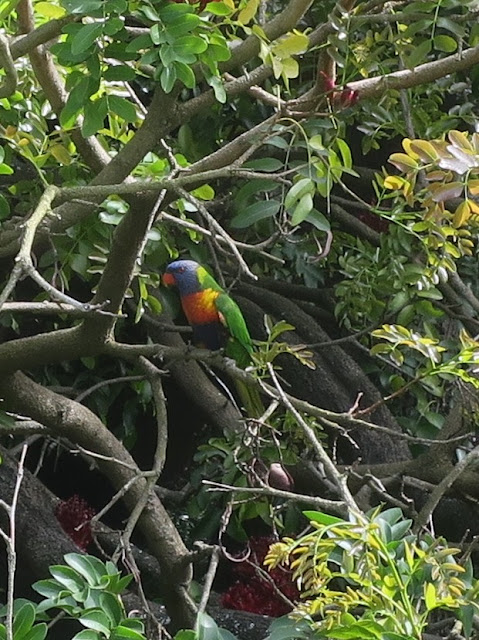This morning, Sunday, we visited the Royal Botanic Garden Melbourne to see how the Lotuses were developing this season.
Some of the new leaves had unfurled sufficiently to sit on the lake surface and, as you can see, capture some of the overnight rain.
A little further along I noticed these reeds and their reflections in the water. This reminded me of a photo I took in the lake at the Sale Botanic Gardens, three years ago.
I was really fascinated by the reflections of the reeds and the pink-tinged clouds as the sun was setting. The image reminded me of the Sogetsu curriculum exercise of making an ikebana with straight lines. Nature has done it before we ever tried.* * * * *
On Saturday I attended Emily Karanikolopoulos' “Master Class” workshop.The class is modelled on the process Mr Kawana uses at classes in his Tokyo studio. Materials and vessels are provided along with other equipment for fixing. So the students have to work with unfamiliar materials and vessels. In the case of a whole day class, the student has to work repeatedly with the same material making several ikebana arrangements one after another. As I have said previously, the aspect which I enjoy is having to work without a preconceived plan.
When we arrived at the class each participant had to draw lots for a prepared bunch of materials and a vessel with which we were to work. The exercise was to make an ikebana in a suiban without using a kenzan.

My materials included a dried branch with many side branches that were relatively parallel. In the photo it is just visible on the table top to the left of the fresh material. The fresh material included two very straight stems of Coastal Banksia, B. integrifolia, and a straight stem of Oriental Lily with a bud and two fully-opened flowers. The vessel was a wide white glass bowl with a slightly domed centre.

I was able to cut the dried branch into two pieces, one of which I inverted to stand with the additional support of the strongest Banksia stem which angles down to the right side in the suiban. I deliberately inverted the stem so that from a standing position the pale underside of the leaves would be visible. The low angle of the photograph looses this aspect. Two leaves on the right side of the Banksia stem clearly show the pale underside as well as the rich green of the top of the leaf. The second piece of the dried branch was placed at an angle across the upright materials. I cut one of the Banksia stems into short sections to create a mass at the top showing only the pale undersides of the leaves. In the photo, the pale undersides look like flower petals but they are, in fact, leaves. Then I placed the oriental lily at the back so that the flowers are mostly obscured, just providing pink contrast to the underside of the leaves. I was reasonably happy with my technique in this exercise, but think the design aspect could be improved.
Greetings from Christopher
14th November 2021
























































